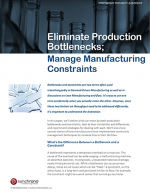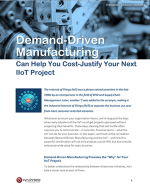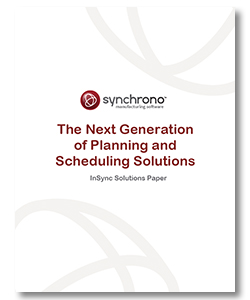The Next Generation of Planning and Scheduling Solutions
The primary goal of most manufacturers has remained constant over the last 50 years: make money now and into the future, yet the underlying process and objectives to achieve this goal have changed considerably.
Evolution of Manufacturing Goals
There was a day when manufacturers operated on the “my customers can have their car in any color, so long as it is black” mentality. A world in which the equation of cost plus profit equals sales price still worked. Over the last 50 years, the change has been dramatic with a conversion of the equation to sales minus cost equals profit.
Today, customers have too many alternatives for manufacturers to be able to set their sales price and therefore, the market sets the sales price irrespective of cost. This new equation has led to continuous improvement methodologies like Lean manufacturing whose mantra is the continuous and relentless elimination of waste.
This is how profit increased in the year 2011 and beyond. In addition, manufacturers are now in a world where they are expected to deliver what the customer wants, when they want it, for a reasonable price. These new realities put intense pressure on manufacturers to continuously improve or face extinction.
Getting on the path to continuous improvement is easier stated than achieved. Manufacturers face increasing variability coupled with increased product and supply-chain complexity. The impact of ever-increasing variability and complexity is often a degradation in delivery performance and results in higher inventories, rising fulfillment costs and poor utilization of labor and equipment.
In environments where variation and complexity have taken over, confusion and chaos reign supreme and fire-fighting is the norm. Profits erode as manufacturers employ more people to manage the chaos, pay expedite and premium freight fees to overcome material deficiencies, pay overtime premiums to try and get orders back on track and pay late fees. Worse, they lose customers based on their inability to meet customer commitments.
What’s Related




Favorites





